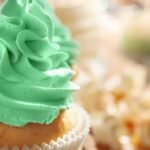Are you looking to add a touch of elegance to your homemade cakes? One of the best ways to do that is by learning how to decorate cake with whipping cream. Whipping cream is a versatile and delicious option for decorating cakes, offering a light and airy texture that can elevate any dessert. Whether you’re a beginner or an experienced baker, mastering the art of decorating with whipping cream can take your cake creations to the next level.
Whipping cream comes in various types and grades, each with its own unique qualities and considerations. It’s essential to understand the differences between them and choose the right one for your cake decorating needs. Additionally, preparing the cake base is an important step in ensuring that your whipped cream decorations will hold up and enhance the overall flavor and texture of the dessert.
Once you have selected the right whipping cream and prepared your cake base, it’s time to master the art of making perfect whipped cream. This crucial step sets the foundation for creating stunning decorations and requires some tips and tricks for achieving smooth and stable results.
From there, you can explore various decorating techniques such as piping, frosting, swirling, and even adding flavors and colors to create visually appealing designs that are sure to impress. Whether you’re aiming for a simple yet elegant look or more intricate designs, whipping cream offers endless possibilities for elevating your cake creations.
Choosing the Right Whipping Cream
When it comes to cake decorating with whipping cream, choosing the right type of whipping cream is crucial. There are different types of whipping creams available in the market, and each one has its unique characteristics that can affect the outcome of your cake decoration.
The two main types of whipping cream are heavy cream and light whipping cream. Heavy whipping cream contains a higher fat content, making it more stable when whipped, while light whipping cream has a lower fat content and may not hold its shape as well.
Another consideration when choosing whipping cream for cake decoration is whether to use sweetened or unsweetened whipping cream. Sweetened whipping cream is convenient for those who prefer a quick and easy option, but keep in mind that it may not be suitable for all cake recipes, especially if you want to control the level of sweetness in your cake decoration.
It’s important to also consider any dietary restrictions or preferences when choosing whipping cream for cake decorating. For those looking for a lower-fat option, there are also non-dairy alternatives such as coconut or almond-based whipped toppings available in the market. These options provide a suitable alternative for individuals who are lactose intolerant or following a vegan diet.
| Whipping Cream Type | Characteristics |
|---|---|
| Heavy Cream | Higher fat content, more stable when whipped |
| Light Whipping Cream | Lower fat content, may not hold shape as well |
| Sweetened Whipping Cream | Contains added sugar for convenience |
| Non-Dairy Alternatives (e.g. coconut or almond-based) | Suitable for lactose intolerant and vegan individuals |
Preparing the Cake Base
Before you can start decorating your cake with whipping cream, it is essential to have a well-prepared cake base. This involves baking the cake to perfection and allowing it to cool completely before adding any whipped cream.
When baking the cake, it is crucial to follow the recipe instructions carefully and keep an eye on it while in the oven to avoid overcooking or undercooking. Once the cake is baked, remove it from the oven and let it cool in the pan for about 10-15 minutes before transferring it to a wire rack to cool completely.
Properly cooling the cake is essential because applying whipping cream on a warm cake can cause it to melt, resulting in a messy and uneven frosting. It is recommended to let the cake cool for at least one hour before starting the decorating process. Some bakers even prefer preparing the cake base a day in advance and refrigerating it overnight to ensure that it is firm and easy to work with when adding whipped cream.
In addition to cooling, trimming the top of the cake to ensure a level surface for frosting is also an important step in preparing the base for decorating. Using a serrated knife or a cake leveler, carefully trim any uneven areas or domed tops from the cake layers. This will create a smooth and even surface for the whipped cream decoration.
| Preparation Steps | Details |
|---|---|
| Baking | Follow recipe instructions, monitor while baking |
| Cooling | Cool in pan then transfer to wire rack; can refrigerate overnight |
| Trimming | Use serrated knife or leveler to create even surface |
Making the Whipped Cream
When it comes to decorating a cake with whipping cream, achieving the perfect consistency and texture is key. Follow these tips for successful whipped cream every time:
- Choose a high-fat content whipping cream, preferably heavy cream with at least 36% fat. The higher the fat content, the better the stability of the whipped cream.
- Ensure that your equipment, including the bowl and beaters, are clean and completely dry before whipping the cream. Any moisture can hinder the process of achieving stiff peaks.
- Chill your mixing bowl and beaters in the refrigerator for at least 15 minutes before using them. Cold equipment will help the cream to whip faster and hold its shape better.
Additionally, consider these tips to enhance the flavor and stability of your whipped cream:
- Add a small amount of vanilla extract or other flavorings after reaching soft peaks to avoid over-whipping.
- To stabilize the whipped cream and prevent it from deflating, gradually incorporate powdered sugar while whipping until stiff peaks form. This will also add sweetness to the whipped cream.
- If you plan to use food coloring for decorative purposes, opt for gel-based colors instead of liquid ones, as they won’t deflate or water down the whipped cream.
By following these tips, you can ensure that your whipped cream turns out light, fluffy, and stable enough for decorating a beautiful cake.
Decorating Techniques
When it comes to decorating a cake with whipping cream, there are various techniques that can be used to achieve beautiful designs. Whether you want to create intricate piped patterns, smooth frosting, or elegant swirls, mastering these techniques will enhance the visual appeal of your cake.
Piping
Piping is a popular cake decorating technique that involves using a pastry bag and different tips to create various designs with whipping cream. From simple rosettes and borders to more elaborate floral patterns and lettering, the possibilities are endless. To ensure success when piping, it’s important to use the right consistency of whipped cream – firm enough to hold its shape but still easy to pipe.
Frosting
For those who prefer a smooth and creamy finish on their cake, frosting with whipping cream is an excellent choice. This technique involves covering the entire cake with an even layer of whipped cream, which can then be smoothed out for a clean and polished look. Using an offset spatula or icing smoother will help achieve professional results when frosting your cake.
Swirling
Swirling is another popular decorating technique that adds an elegant touch to cakes. By simply swirling whipped cream onto the surface of the cake using a spatula or knife, you can create beautiful marbled or textured designs. This technique is great for adding a touch of artistry to your cake without requiring advanced piping skills. Experimenting with different swirling patterns will allow you to create unique and visually appealing decorations for your cakes.
Adding Flavors and Colors to Whipping Cream for Cake Decoration
When it comes to decorating cakes with whipping cream, adding flavors and colors can take your creations to the next level. Not only does this allow you to customize the taste of the whipped cream, but it also gives you the opportunity to match the flavor and color scheme of the cake or event. Here are some tips for adding flavors and colors to whipping cream for cake decoration:
- Flavors: Some popular options for flavoring whipping cream include vanilla, almond, chocolate, coffee, citrus zest, and fruit extracts. To infuse the whipping cream with these flavors, simply add a small amount of extract or zest during the whipping process. Keep in mind that a little goes a long way, so start with a small amount and adjust to taste.
- Colors: Adding color to whipping cream can be achieved using food coloring gels or powders. It’s important to use gel-based or powdered food coloring rather than liquid ones, as they won’t cause the whipped cream to become too thin or runny.
Start with a small amount of coloring and gradually add more until you achieve your desired shade. You can also create multi-colored whipped cream by dividing it into smaller batches and coloring each one separately before combining them for a marbled effect. - Beyond traditional flavors and colors: Don’t be afraid to get creative with your whipped cream by experimenting with unique flavor combinations and unexpected colors. For example, try adding lavender extract for a floral twist or matcha powder for a vibrant green hue. The possibilities are endless when it comes to customizing whipped cream for cake decoration.
By incorporating these tips for adding flavors and colors to whipping cream, you’ll be able to elevate your cake decorating game and impress your friends and family with beautiful and delicious creations.
Tips for Creating Professional-Looking Designs
When it comes to cake decorating with whipping cream, achieving professional-looking designs can take your cakes to the next level. Whether you are decorating a birthday cake, wedding cake, or any other special occasion dessert, mastering the art of creating polished and stunning designs with whipping cream can make all the difference. Here are some tips for creating professional-looking designs that will impress your friends, family, and clients.
Practice Makes Perfect
One of the key components to creating professional-looking designs with whipping cream is practice. Take the time to experiment with different piping techniques, frosting styles, and decorations. Practice on a variety of surfaces such as parchment paper or even directly onto a cake dummy. By honing your skills through practice, you’ll become more confident in your ability to create beautiful and intricate designs.
Use Quality Piping Tools
Investing in high-quality piping tools can make a significant difference in the outcome of your whipped cream decorations. Look for sturdy piping bags and durable stainless steel tips that will allow for precise and consistent piping. Having a variety of tip sizes and shapes will also give you more versatility when it comes to creating different designs.
Attention to Detail
Professional-looking designs often come down to the little details. Pay attention to symmetry, spacing, and overall balance when decorating with whipping cream. Take your time when piping borders, rosettes, or other intricate designs to ensure they are uniform and visually appealing. Additionally, carefully placing any additional decorations such as fruit, flowers, or sprinkles can elevate the overall presentation of your cake.
By following these tips for creating professional-looking designs with whipping cream, you can elevate your cake decorating skills and wow everyone with your beautifully decorated desserts. With practice, quality tools, and attention to detail, you’ll be able to create cakes that look like they came from a professional bakery.
Troubleshooting
In conclusion, decorating a cake with whipping cream can be a fun and creative way to bring your baked goods to the next level. The versatility of whipping cream allows for endless possibilities when it comes to decorating techniques, flavors, and colors. However, it’s important to be aware of common problems that may arise when working with whipped cream for cake decoration and how to troubleshoot them effectively.
One of the most common issues when using whipping cream for cake decoration is over-beating, which can result in a grainy or curdled texture. To avoid this problem, it’s crucial to keep a close eye on the consistency of the whipped cream and stop beating once it reaches stiff peaks. Additionally, ensuring that both the cream and utensils are properly chilled before whipping can help prevent over-beating.
Another challenge that decorators often face is maintaining the stability of whipped cream in warm or humid environments. To address this issue, consider stabilizing the whipped cream with ingredients such as gelatin or cornstarch, which can help maintain its shape and prevent melting. It’s also important to refrigerate the decorated cake until serving to preserve the whipped cream’s texture and design.
Incorporating these troubleshooting tips into your cake decorating process will help you achieve professional-looking designs while avoiding common whipped cream decorating problems. With practice and attention to detail, you’ll soon become confident in using whipping cream as a versatile and delicious medium for creating stunning cake decorations.
Frequently Asked Questions
Can Whipping Cream Be Used to Decorate Cakes?
Whipping cream can definitely be used to decorate cakes. Its light and fluffy texture makes it perfect for creating decorative swirls, rosettes, and borders on cakes. It can also be tinted with food coloring to add a pop of color to the cake.
How Far in Advance Can You Decorate a Cake With Whipped Cream?
The whipped cream can usually be applied to a cake as far in advance as one day ahead, but it’s best to keep the cake refrigerated until ready to serve. This will help the whipped cream maintain its structure and prevent it from melting or deflating too quickly.
Will Whipped Cream Melt on a Cake?
Yes, whipped cream has a tendency to melt if left at room temperature for an extended period of time, especially under warm or humid conditions. To prevent this, cakes decorated with whipped cream should be kept refrigerated until right before serving. This will help maintain the stability of the whipped cream and preserve its appearance on the cake.

Welcome to my blog about home and family. This blog is a place where I will share my thoughts, ideas, and experiences related to these important topics. I am a stay-at-home mom with two young children. I hope you enjoy reading it! and may find some helpful tips and ideas that will make your home and family life even better!





